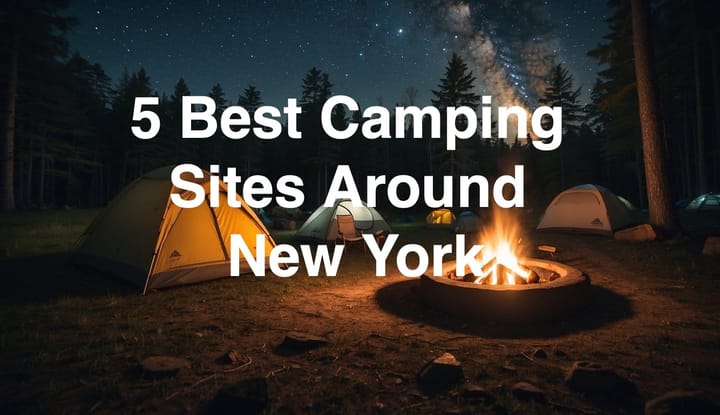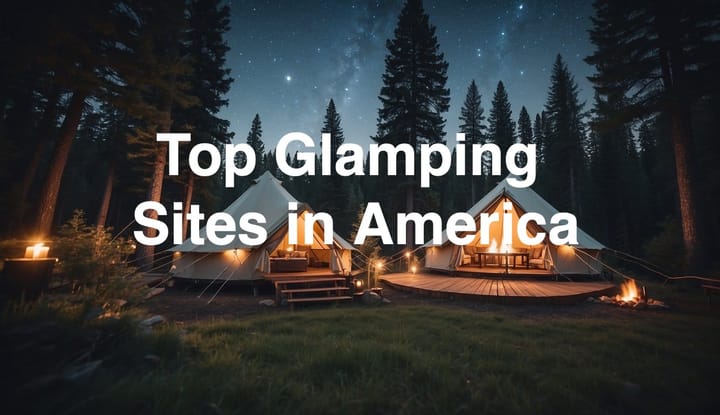Types of Camping
Camping is an activity that offers a unique fusion of adventure, relaxation, and the allure of nature’s simplicity. It's a way to disconnect from the digital world and reconnect with the natural one, testing your ability to adapt to outdoor living.

Whether you prefer the coziness of a family caravan park or the isolation of a backcountry hideaway, camping can accommodate a wide array of preferences and skill sets.
At its core, camping involves some form of overnight stay in an outdoor area, which could range from a structured campsite to remote wilderness.
The type of camping you choose will define your preparation needs, accommodations, and the activities available to you.
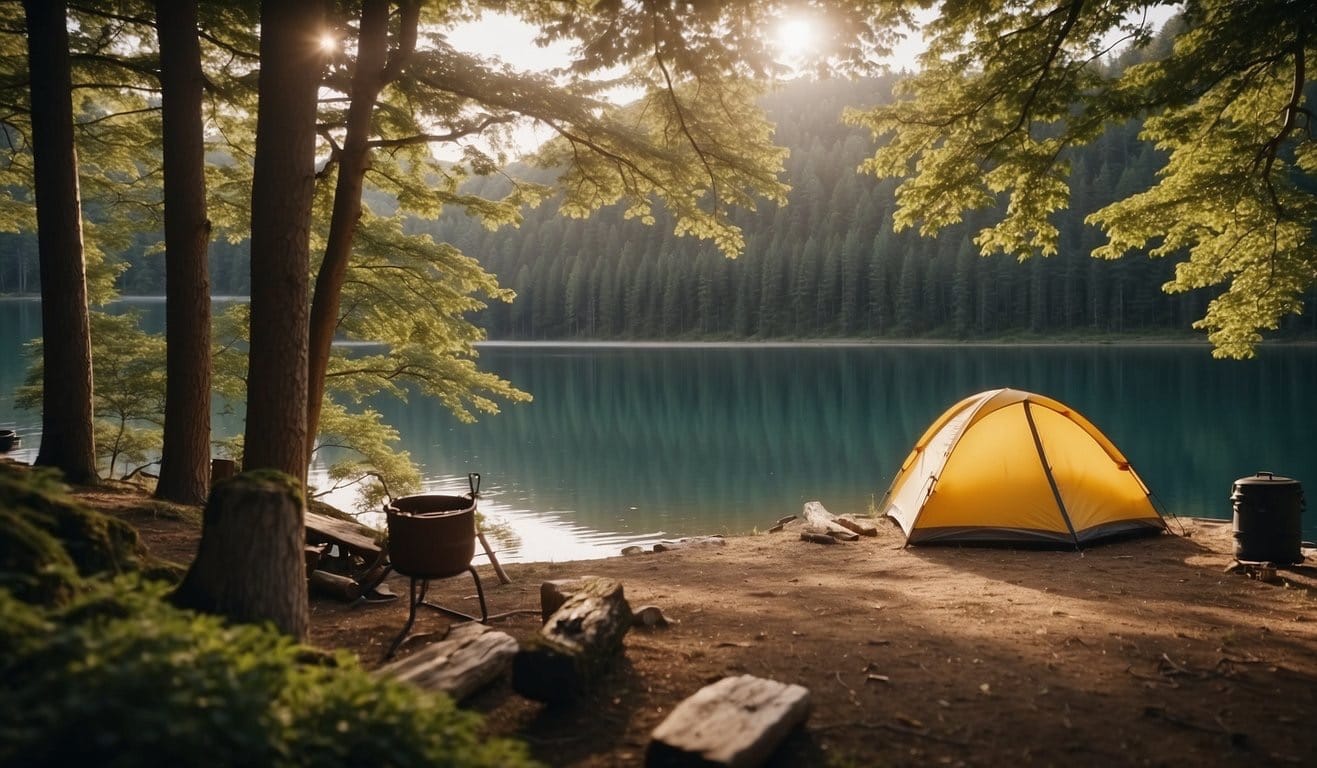
Tent camping, beach camping, car camping, and adventure camping are just a few examples, each requiring different gear and mindsets.
While car camping might offer convenience and family-friendly amenities, backcountry expeditions could demand thorough planning and self-reliance.
As impactful as camping can be on your well-being, it’s equally important to consider your impact on the environment and ensure that your presence is respectful and sustainable.
Key Takeaways
- Camping provides a range of experiences from rustic to comfortable, each requiring different preparations.
- The choice of camping style influences the types of accommodations and activities available to you.
- Environmental stewardship and cultural respect are essential aspects of responsible camping.
Understanding Camping
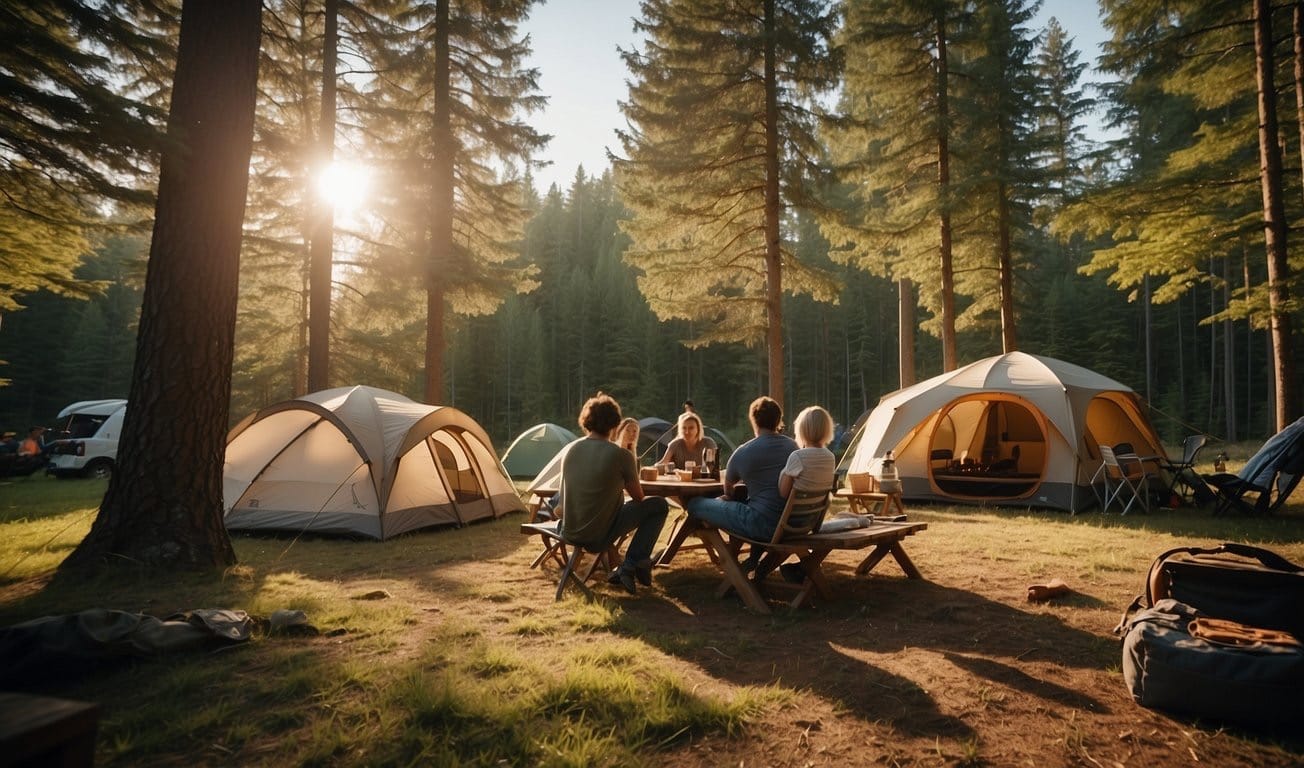
Camping is an activity that can vary widely in style, from the minimalist approach of backpacking to the comfort of glamping. Your experience will differ greatly depending on the gear you carry and the type of camping you choose.
Types of Camping
- Tent Camping: This is the classic form of camping where you pitch a tent at a designated campsite. It's accessible for most and a great way to start your outdoor adventure.
- Backcountry Camping: Involves hiking to more remote areas to set up camp, offering a pure wilderness experience.
- RV and Van Camping: Allows for easy travel with the comforts of home, suitable for long road trips.
- Glamping: Short for glamorous camping, combines the outdoors with luxurious amenities.
- Survival Camping: Tests your ability to stay alive with minimal gear in the wilderness.
- Primitive Camping: Often no amenities, this form focuses on simplicity and being one with nature.
- Hammock Camping: Uses a hammock instead of a tent, ideal for areas with plenty of trees.
- Ultralight Camping: Emphasizes carrying the lightest and simplest gear on your back.
- Frontcountry Camping: Often includes amenities such as restrooms and water sources, located near accessible roads.
When choosing your camping style, consider your comfort level, experience, and the nature of the location you plan to visit.
Camping Gear Essentials
- Shelter: Your choice might be a tent, hammock, or RV. The shelter should be appropriate for the climate and environment.
- Sleeping Bag: Match the bag's temperature rating with the coldest temperatures you expect to encounter.
- Essential Gear:
- Backpack: Size depends on trip length and camping style.
- Cooking equipment: Stove, fuel, and lightweight cookware.
- Water treatment: Filters or purification tablets.
- Navigation tools: Map and compass or GPS.
- First-Aid Kit: Adjust content based on trip duration and remoteness.
Choose gear based on the type of camping you'll be doing and always be prepared for changes in weather or unplanned situations.
While selecting your gear, prioritize durability, weight, and packability to match your camping style—whether it's the simplicity of a hammock under the stars or the strategic packing list for an ultralight trek.
Camping Preparation
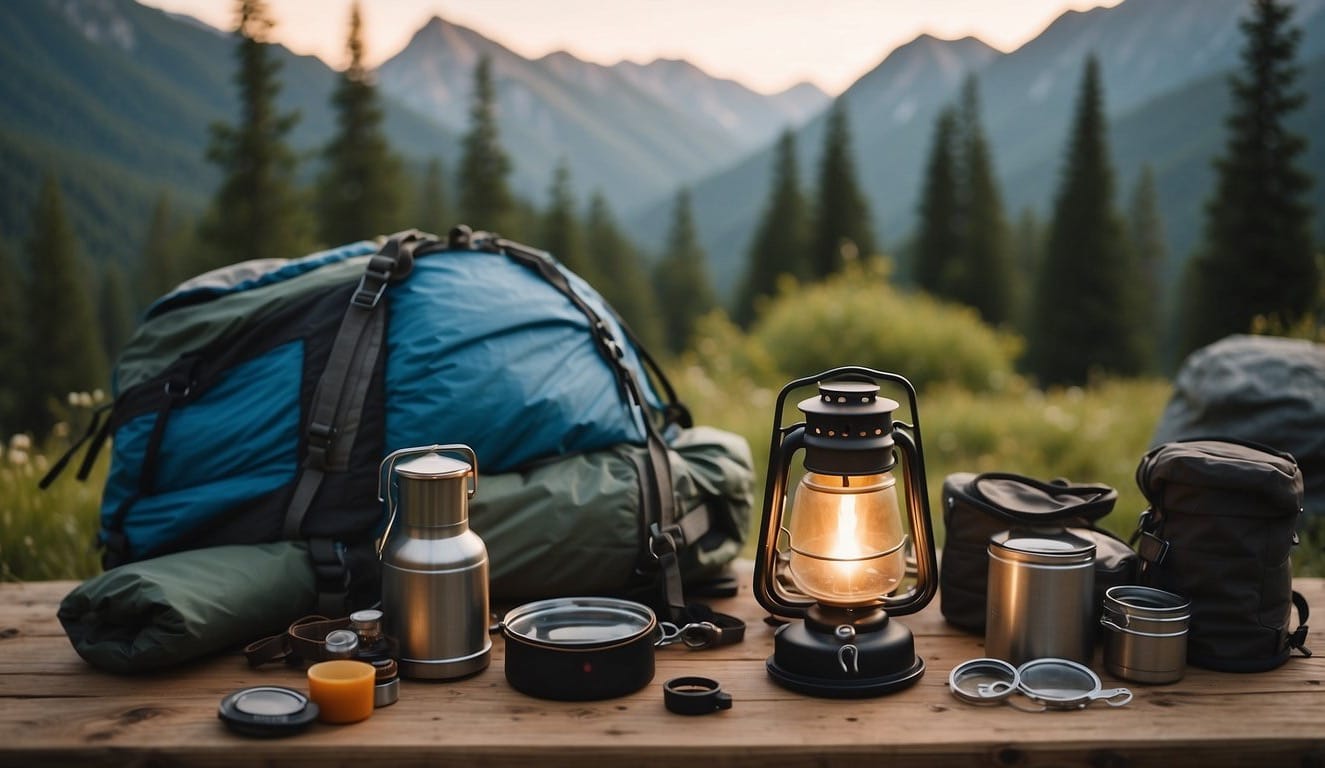
Before heading out into the great outdoors, it's crucial to meticulously plan your trip, pack an adequate food and water supply, and choose clothing and personal items carefully to ensure your camping experience is as enjoyable and safe as possible.
Planning Your Trip
To begin your adventure, identify the type of camping you'll be engaging in to determine what gear and resources are necessary.
Tailor your itinerary to the camping style, whether it's backcountry, kayak, or RV camping, and take into account the destination's climate and terrain.
Understand what permits or reservations are needed and map out your route, including emergency exit points.
Essential tools for this plan include a detailed map, a reliable compass, and possibly a GPS device.
Checklist for Trip Planning:
- Destination research
- Campsite reservation
- Permits and fees
- Emergency contacts
- Route planning
- Weather forecast
Food and Water Supply
You should always ensure a sufficient food and water supply for the duration of your camping trip, plus an extra day's worth in case of unexpected delays.
For water, consider the accessibility at the site—if there are no sources nearby, you need to bring all the water you'll require or tools for purification.
With food, aim for high-energy, non-perishable items that are easy to cook or can be eaten raw.
Food and Water Essentials:
- Water bottles or hydration system
- Water purification method (tablets, filters)
- High-energy snacks (nuts, energy bars)
- Easy-to-cook meals
- Non-perishable food items
- Cooking equipment as needed
Clothing and Personal Items
Selecting appropriate clothing is vital, both to withstand the elements and to ensure comfort during activities.
Dress in layers to easily adjust to changing temperatures, and don't forget waterproof and windproof outerwear.
Sturdy footwear is a non-negotiable to protect your feet.
Your personal items list should include a first aid kit, sun protection, and insect repellent to tackle any minor injuries or environmental annoyances.
Clothing and Gear for All Conditions:
- Base layers (moisture-wicking materials)
- Insulating layers (fleece or down jackets)
- Protective layers (waterproof, breathable shell)
- Durable, supportive footwear
- Hat, gloves, and extra socks
- First aid kit
- Sunscreen and sunglasses
- Insect repellent
Camping Accommodations
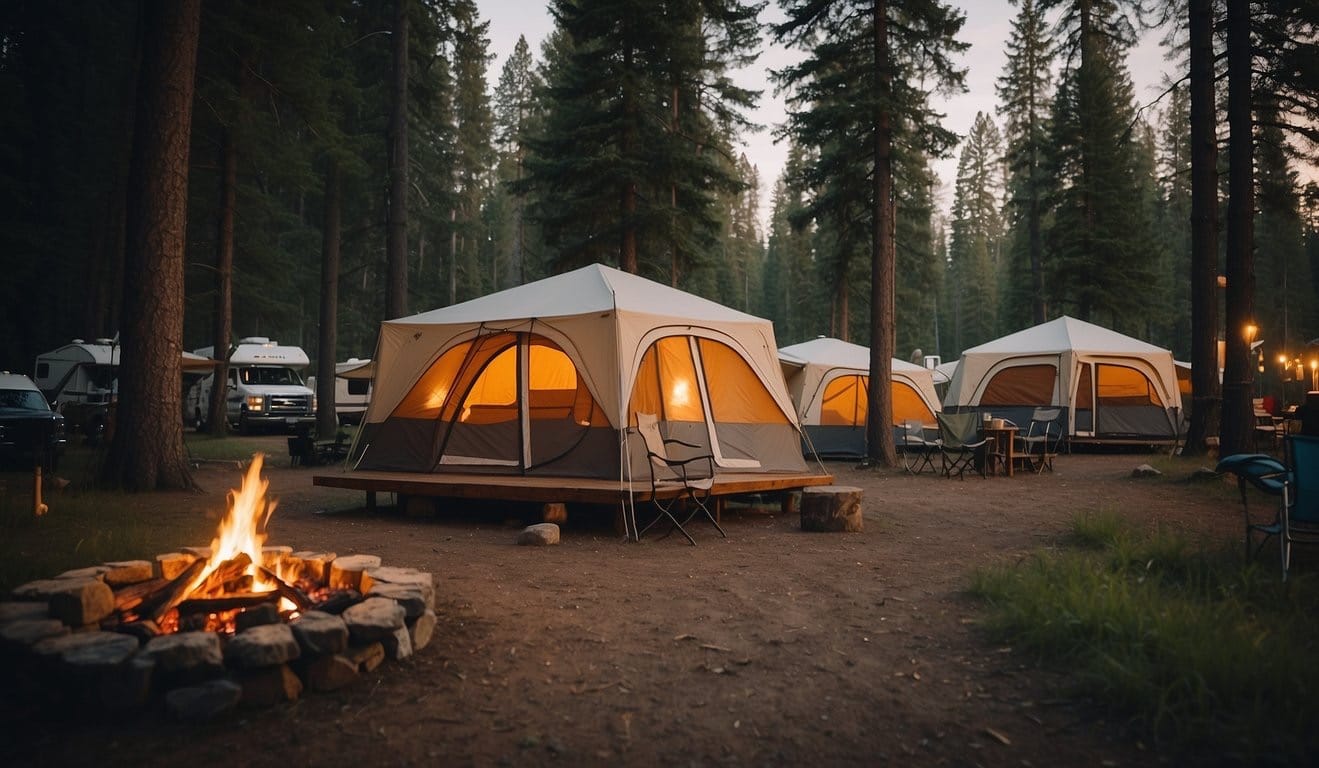
When planning your camping adventure, the type of accommodation you choose is crucial for comfort and experience. Your decision should factor in the location and the kind of amenities you desire.
Choosing the Right Shelter
For traditional tent camping, selecting the right type of tent is essential.
Whether you're settling in a national park or a private campground, your shelter should align with the environment.
Take into consideration factors like:
- Weather resistance: Your tent should withstand local weather conditions.
- Capacity: Ensure there’s enough space for all campers and gear.
- Terrain: Some tents are better suited for rocky grounds, while others are ideal for sandy beaches.
Hammock camping is an alternative for more natural settings like state parks or national forests. It offers a unique experience, merging both shelter and sleep, so long as you have sturdy trees to support you.
For a more water-based adventure, canoe camping allows you to carry gear in your vessel and paddle to remote areas.
Ensure your supplies are waterproofed and your shelter—probably a lightweight, compact tent—is canoe-friendly.
Luxury Camping Options
Luxury camping, often referred to as "glamping", offers amenities such as electricity, comfortable bedding, and sometimes even climate control.
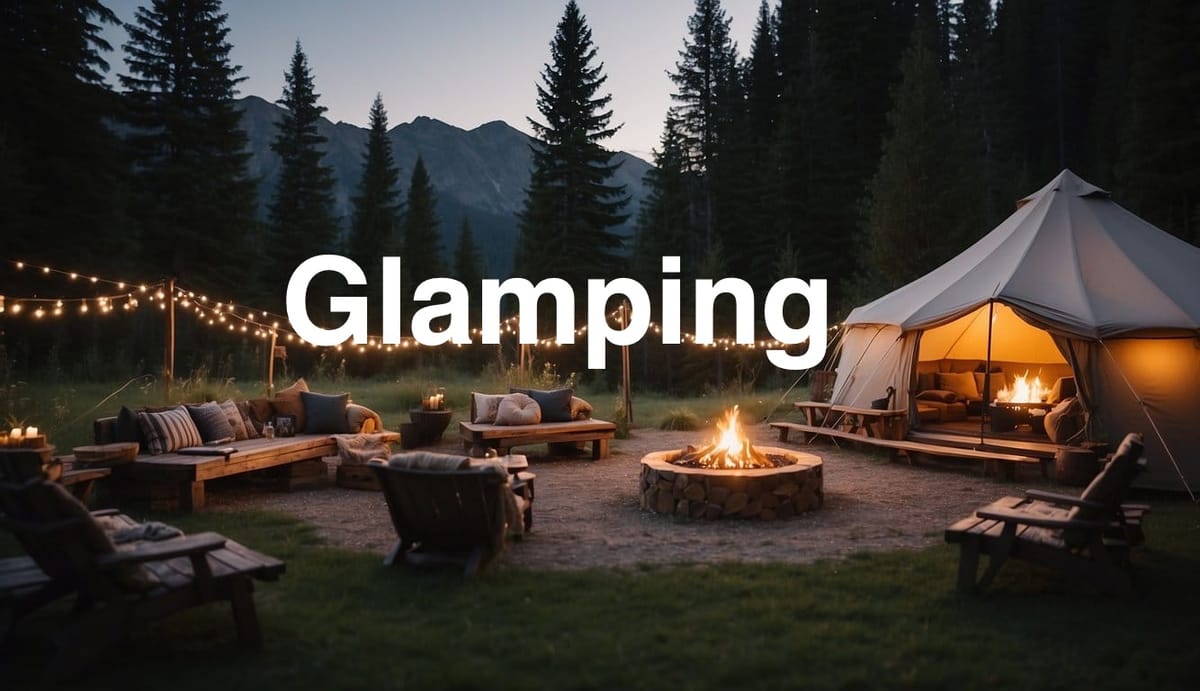
Accommodations in this category include:
- RV camping: Provides a home on wheels with the convenience of built-in kitchens and beds.
- Yurts: A sturdy, tent-like structure often equipped with furniture and sometimes utilities.
- Camping pods: Wooden structures that offer a more solid shelter while keeping a rustic charm.
These options are available in various locations, from tranquil beaches to more developed RV parks.
Natural and Remote Camping
Venturing into more remote areas requires a different approach to accommodations. When you're in untouched environments, you’ll typically carry your shelter, such as:
- Backpacking tents: These are designed to be light and easy to pack.
- Bivy sacks: A minimalist shelter option that’s more compact than a tent.
- Natural shelters: In survival situations, you might construct these from materials found in the wilderness.
Camping Activities
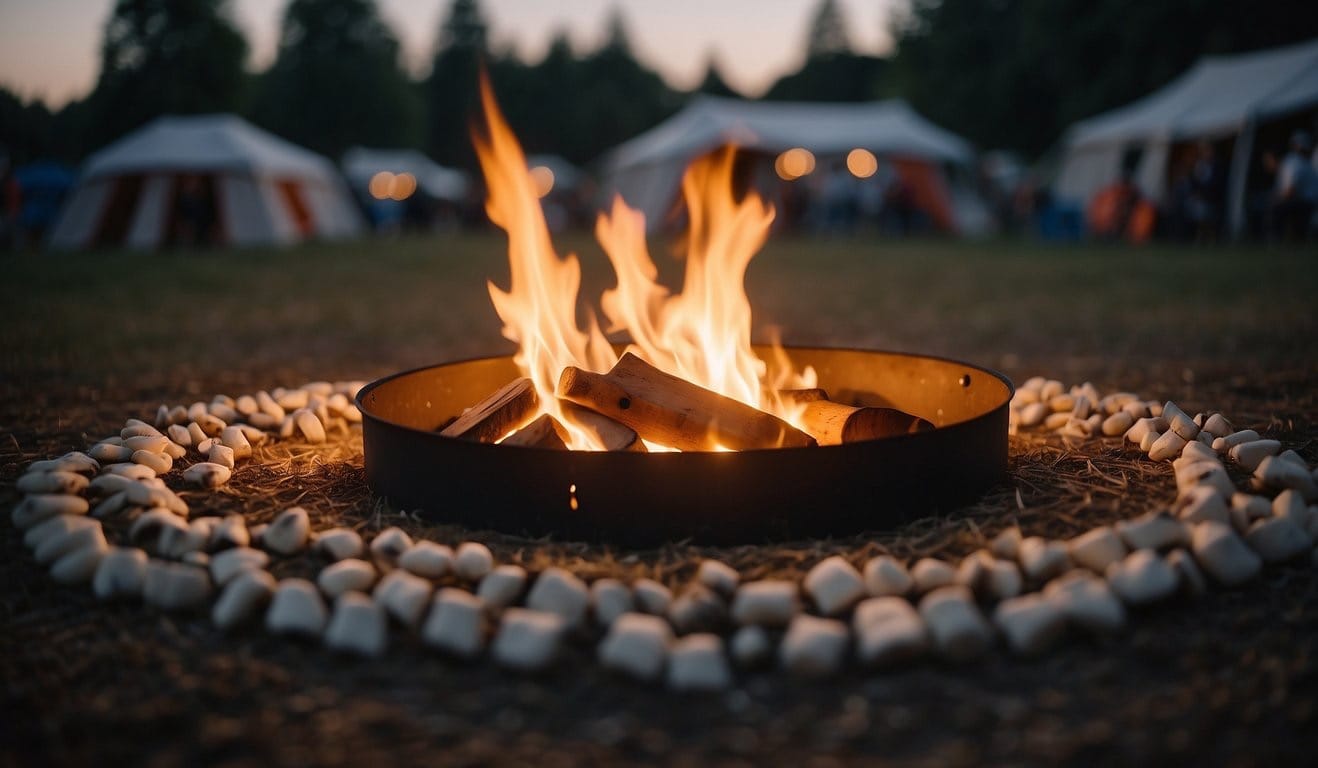
Engaging in various activities can maximize your enjoyment and experience while camping.
From exploring on foot to enjoying the water and participating in classic outdoor sports, there's a multitude of ways to enrich your time in the great outdoors.
Hiking and Nature Excursions
You can indulge in the serenity of the wilderness by embarking on hiking and nature excursions.
Hiking trails offer varying levels of difficulty, so whether you're a novice or an experienced hiker, there's a path that's right for you.
Make sure to prepare adequately with proper footwear, a map, and sufficient water.
- Essentials for Hiking:
- Sturdy boots or shoes
- Navigation tools (map, compass)
- Hydration and snacks
- Sun protection (hat, sunscreen)
- First aid kit
Water-Based Activities
For those interested in water-based activities, kayak camping is an immersive experience. Paddling to your campsite allows you to access remote areas often unreachable by foot.
Fishing can be a tranquil activity; just make sure you're aware of local regulations and have the necessary permits.
- Water-Based Must-Haves:
- Life jacket or personal flotation device (PFD)
- Waterproof bags for gear
- Fishing equipment (rod, bait, license)
- Appropriate kayak or canoe
Outdoor Recreation
Outdoor recreation enthusiasts will find plenty of activities, from playing Frisbee to engaging in a friendly game of volleyball.
When the day winds down, gather around the campfire for classic camping pastimes like storytelling or marshmallow roasting.
Always adhere to fire safety guidelines to ensure you leave no trace.
- Campfire Safety Checklist:
- Confirm if fires are permitted in the area
- Use established fire rings or pits
- Keep water or a shovel nearby to extinguish flames
- Never leave the fire unattended
Types of Camping Experiences
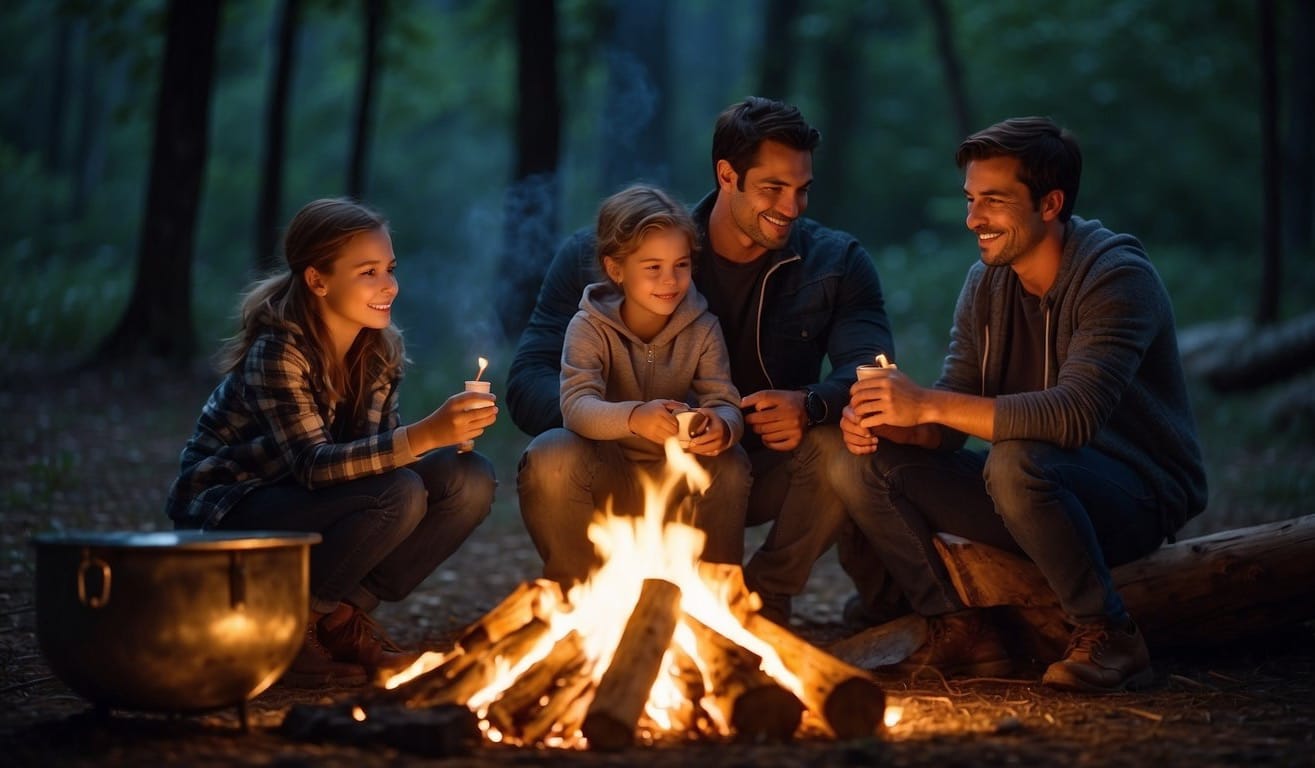
When selecting a camping style, consider what fits your preferences, the season, and the event you're attending.
Each type offers a distinct atmosphere and set of activities, from serene family getaways to challenging survival adventures.
Family and Kids-Friendly Camping
If you're aiming to introduce your kids to the outdoors, Family and Kids-Friendly Camping provides a safe and enjoyable environment.
With amenities such as playgrounds and structured activities, it's a stress-free option that often includes:
- Vehicle Access: Camp near your car for easy equipment management.
- Facilities: Restrooms and running water are available for comfort.
Adventure and Survival Camping
For those craving a more rigorous experience, Adventure and Survival Camping pushes your outdoor skills to the limit. This encompasses:
- Backcountry Trekking: Venture into remote areas, relying on your ability to navigate and survive.
- Minimal Gear: Carry only the essentials to test your survival skills.
Seasonal Camping Varieties
Your camping choices vary with the seasons, each providing unique experiences:
- Winter Camping: Brave the cold for a tranquil and starkly beautiful setting.
- Beach Camping: Enjoy the sun and surf during warmer months for a relaxed vibe.
Camping for Special Events
Special occasions call for specialized camping experiences. Partake in:
- Festival Camping: Join the festivities with a tent at a music or cultural event.
- Reenactment Camping: Step back in time with historically-themed camping that includes period-appropriate gear and attire.
Camping Logistics
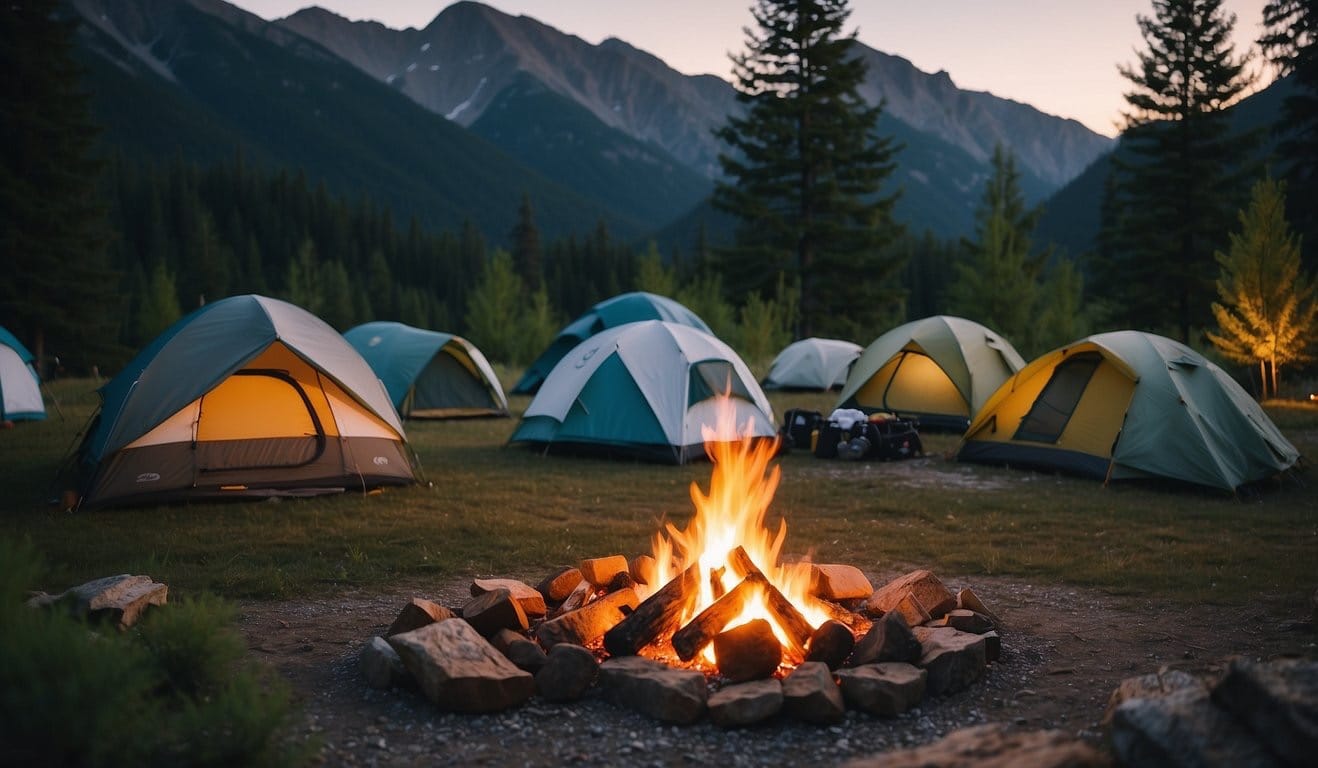
When planning a camping trip, logistics play a crucial role. You must consider accommodations, transportation, and adherence to safety standards to ensure a smooth outdoor experience.
Campgrounds and Facilities
Your choice of campground will impact the facilities available to you. Many campgrounds offer varying levels of amenities:
- Basic Campgrounds may provide simple pit toilets and no electricity. A water source and picnic tables are typically standard.
- Developed Campgrounds often include showers, bathroom facilities with running water, and kitchen areas.
- For RV camping, look for sites with RV Hookups including electricity, water, sewer, and sometimes cable TV or Wi-Fi connections.
- Boondock or dispersed camping areas won't have facilities; be prepared to be self-sufficient.
Transportation and Mobility
Getting to and around your campsite requires planning:
- If you're car camping, ensure your vehicle is equipped for the terrain. Some sites have parking adjacent to the campsite, while others may not.
- For RVs, confirm routes that can accommodate your vehicle's size and check for nearby gas stations and dump stations.
- Having a kayak or canoe introduces different transportation logistics as you may need to load all supplies into your vessel.
- Pack essentials like rope, food, and water within easy reach during transportation.
Safety and Regulations
Safety is paramount, and observing regulations helps maintain it:
- Familiarize yourself with the rules regarding fire pits, food storage, and waste disposal. These often vary across campgrounds, especially between state lines in the US.
- Essential gear includes a safety kit, sleeping pad or bed, and perhaps a hammock for restful sleep, which is vital for safety.
- Pay attention to regulations regarding wildlife, as well as those affecting the use of electricity and RV equipment if applicable.
- Always have a backup plan for emergencies, including knowledge of the nearest medical facilities and how to get help if faced with a situation beyond your control.
Camping and the Environment
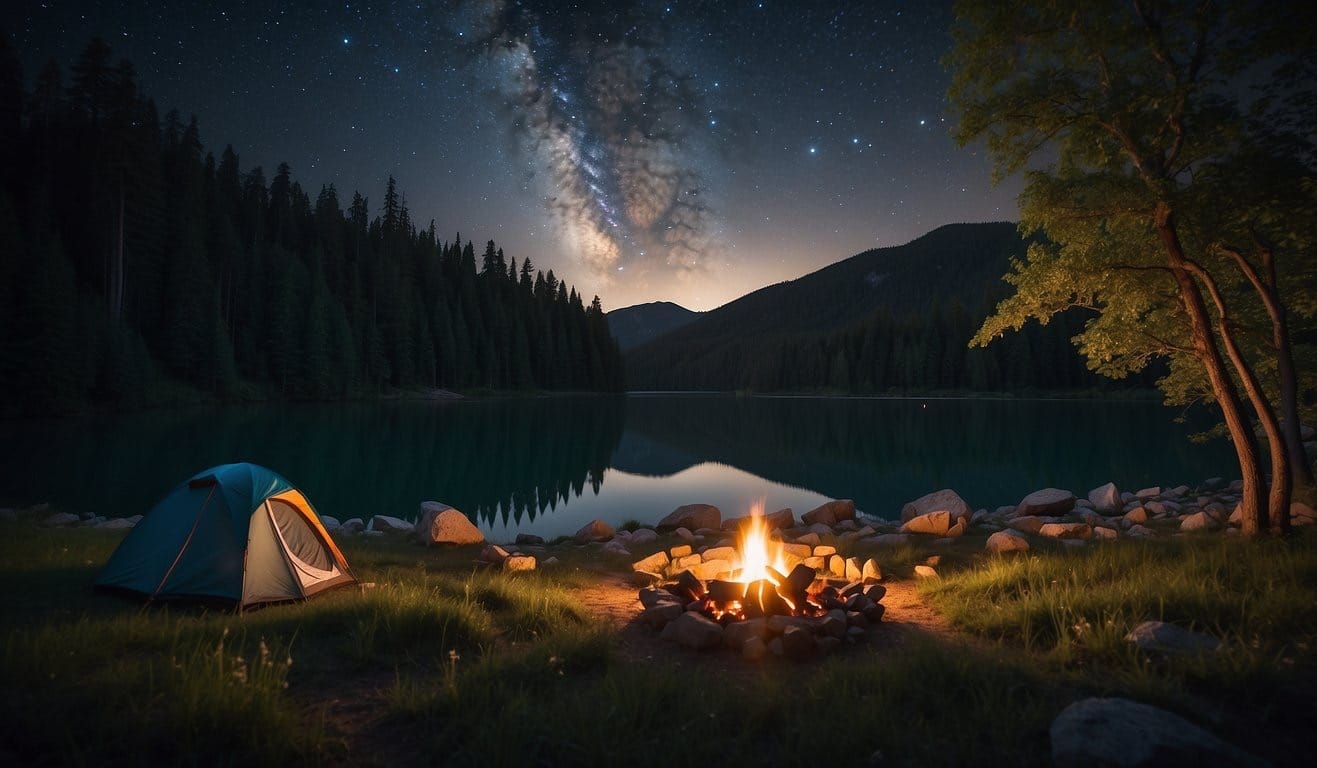
When you venture into the great outdoors, your camping practices can significantly impact the environment.
Understanding these effects and adopting eco-friendly camping practices will help you preserve nature's beauty for future generations.
Environmental Impact
Backcountry camping and dry camping in remote areas like national parks and state parks offer you an immersive experience with nature.
However, such activities can have unintended consequences on the environment. For example:
- Soil Compaction: Heavy foot traffic in popular spots can compact soil, affecting its ability to absorb water and support plant life.
- Wildlife: Your presence can disrupt local wildlife, altering their natural behaviors and habitat.
- Pollution: Improper disposal of waste can pollute waterways and landscapes.
To mitigate your impact:
- Follow Leave No Trace principles.
- Camp in designated areas to avoid damaging pristine ecosystems.
- Dispose of waste properly and consider carrying out all trash.
Eco-Friendly Camping Practices
Adopting eco-friendly camping practices is a direct way to support conservation efforts. You can make a meaningful difference by:
- Using biodegradable soaps and avoiding the release of contaminants into water sources.
- Minimizing campfire impact by using existing fire rings or opting for a camp stove.
- Reducing energy consumption through solar chargers and energy-efficient gear.
Additionally:
- Sustainable Gear: Choose gear made from recycled or sustainable materials to lower your environmental footprint.
- Eco-tourism operators: Support local conservation efforts by opting for eco-camping sites that maintain eco-friendly standards.
Cultural Impact of Camping
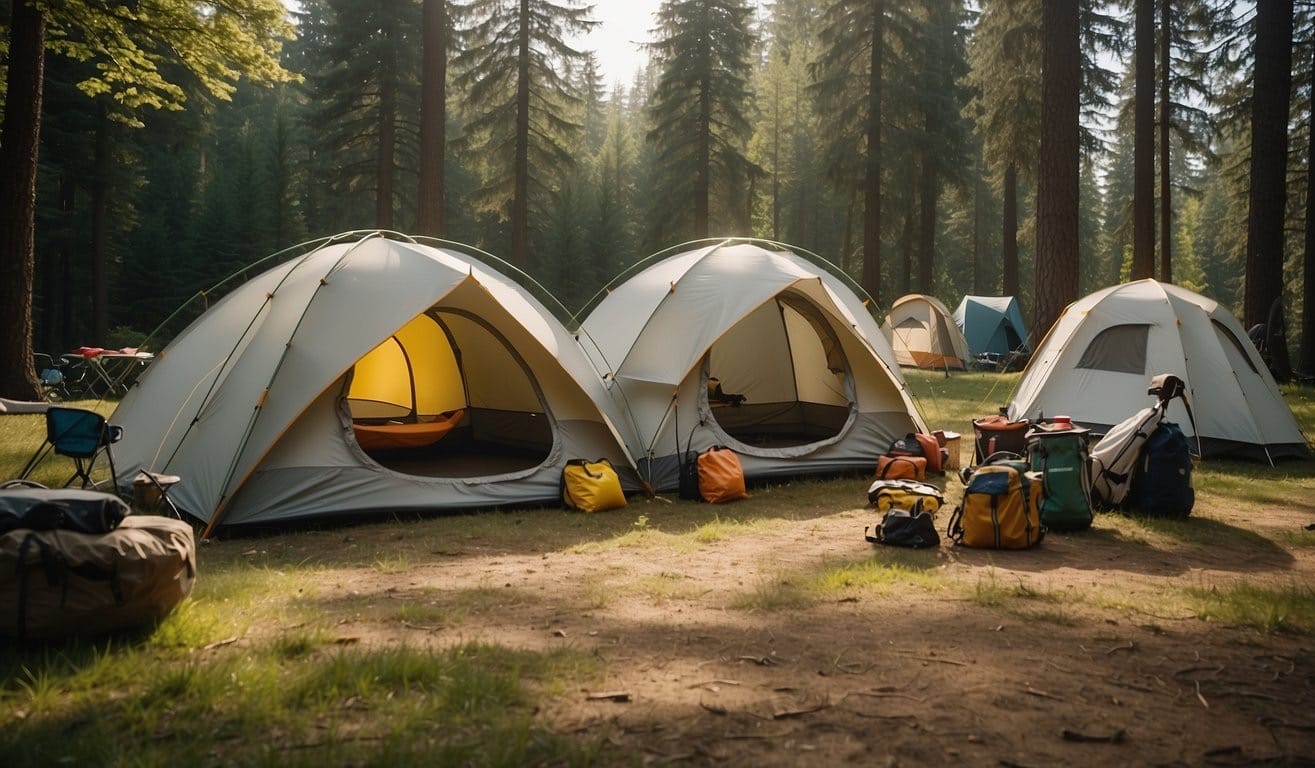
Camping has woven itself into the fabric of societal leisure and recreation, with its influence evident across various sectors, from popular media to historical evolution.
Whether you're seeking peace in national parks or sharing your van life journey on Instagram, your experience is part of a broader cultural phenomenon that spans the comfort spectrum from ruggedness to glamour.
Camping in Popular Culture
Your mental image of camping is likely influenced by its portrayal in popular culture.
You might envision families gathered around a campfire, singing and storytelling; a scene often depicted in films and television. This idyllic representation promotes a sense of communality and peace.
Meanwhile, the recent trend of 'glamorous camping,' or glamping, has received attention on platforms like Instagram, accentuating the allure of combining the rustic outdoor experience with luxurious amenities.
Social media has further popularized van life, with enthusiasts converting vans into mini-homes and documenting their travels through diverse landscapes, from the UK’s rolling countryside to the majestic national parks in the United States.
Historical Significance
Historically, your ancestors might have camped out of necessity, but today's camping practices are largely recreational. The evolution of camping carries historical significance, marking a shift in human lifestyle.
In the early 20th century, camping started as an activity allowing people to escape the industrial city life and reconnect with nature.
Caravans and trailers have been part of this history, offering a portable home for you to explore without sacrificing comfort.
The UK helped popularize this aspect of camping with the advent of caravan clubs, further embedding the practice into recreational norms.
National parks have played a pivotal role by preserving natural spaces for you to camp, promoting appreciation for wilderness and wildlife conservation.
Frequently Asked Questions
In this section, you will find concise answers to common inquiries about the multifaceted world of camping. These responses cover essential gear, different camping forms, associated activities, tent recommendations, most engaging styles, and the nature of campsites.
What are the different categories of camping gear required for outdoor adventures?
You'll need shelter like tents or hammocks, a sleeping system including sleeping bags and pads, cooking equipment such as stoves or fire starting tools, and appropriate clothing. Personal items like first aid kits and navigation tools are also essential.
Can you explain the various forms of camping recognized in physical education programs?
Physical education programs often recognize camping that involves physical activity such as backpacking, where you hike with all your equipment, and adventure camping like canoeing or kayaking where the journey is part of the camping experience.
What activities are commonly associated with different camping styles?
With tent camping, activities often include hiking and fishing. Backpacking integrates the journey with the campsite, involving more trekking. RV camping might include road tripping and exploring campgrounds, whereas wilderness camping involves survival skills.
What types of tents are best suited for the divergent modes of camping?
Dome tents are versatile for many conditions, suitable for car or tent camping. Ultralight tents are best for backpacking. Larger family tents with multiple rooms work well for stationary basecamp camping.
Which style of camping is considered by enthusiasts to be the most engaging and why?
Many enthusiasts find backcountry camping to be the most engaging due to its immersive nature. This style involves navigating remote areas, offering a deeper connection with the environment and a sense of adventure.
Identify the distinctions between permanent, semi-permanent, and transient campsites.
Permanent campsites are established for ongoing use. They feature structures like cabins.
Semi-permanent sites are used for seasonal camping. They are equipped with amenities that support extended stays.
Transient campsites are for short-term use. You can find them in places like hike-in campgrounds.

